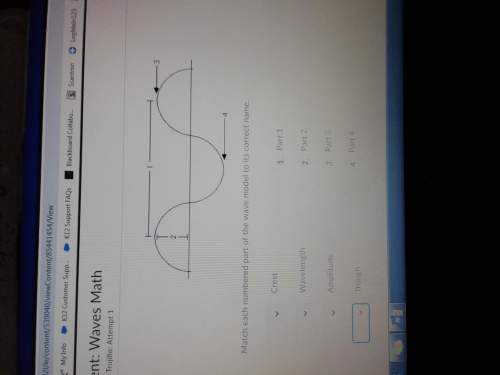Paul is using a magnifying glass, which is a convex lens, to read the small
print on his Insur...

Physics, 25.05.2020 04:00 nicole5918
Paul is using a magnifying glass, which is a convex lens, to read the small
print on his Insurance policy. He has to create a virtual Image of the print on
the same side as the print. At what distance from the print should he hold
the magnifying glass?
The text should be between the focal point and the lens.
The text should be beyond 2F.
The text should be between 2F and F.
The text should be at the focal point.

Answers: 1


Other questions on the subject: Physics

Physics, 21.06.2019 22:30, hawleyemily
Select the word from the list that best fits the definition classification of most stars on the h-r diagram
Answers: 1


Physics, 22.06.2019 00:00, tsupreme
1134567 a jet with mass m = 1.1 ă— 105 kg jet accelerates down the runway for takeoff at 2 m/s2. 1) what is the net horizontal force on the airplane as it accelerates for takeoff? 2.2*10^5 n your submissions: 2.2*10^5 computed value: 220000submitted: saturday, january 26 at 2: 41 pm feedback: correct! 2) what is the net vertical force on the airplane as it accelerates for takeoff? 0 n your submissions: 0 computed value: 0submitted: saturday, january 26 at 2: 41 pm feedback: correct! 3) once off the ground, the plane climbs upward for 20 seconds. during this time, the vertical speed increases from zero to 21 m/s, while the horizontal speed increases from 80 m/s to 95 m/s. what is the net horizontal force on the airplane as it climbs upward? n 4) what is the net vertical force on the airplane as it climbs upward? n 5) after reaching cruising altitude, the plane levels off, keeping the horizontal speed constant, but smoothly reducing the vertical speed to zero, in 13 seconds. what is the net horizontal force on the airplane as it levels off? n 6) what is the net vertical force on the airplane as it levels off?
Answers: 1

Physics, 22.06.2019 00:30, Waakkaa
Glass is transparent to visibile light under normal conditions; however, at extremely high intensities, glass will absorb most of the light incident upon it. this works through a process known as multiphoton absorption. in this process, several photons are absorbed at the same time. if very intense light whose photons carry 2ev of energy is shined onto a material with a band gap of 4ev, that light can be absorbed through two-photon absorption, because two photons have the right amount of energy to bridge the band gap. what is the minimum number of photons of 800-nm light that are needed to equal or exceed the band gap of fused silica glass
Answers: 1
You know the right answer?
Questions in other subjects:

Geography, 01.12.2020 02:10

Mathematics, 01.12.2020 02:10


Mathematics, 01.12.2020 02:10

Mathematics, 01.12.2020 02:10

History, 01.12.2020 02:10

Social Studies, 01.12.2020 02:10


Mathematics, 01.12.2020 02:10




